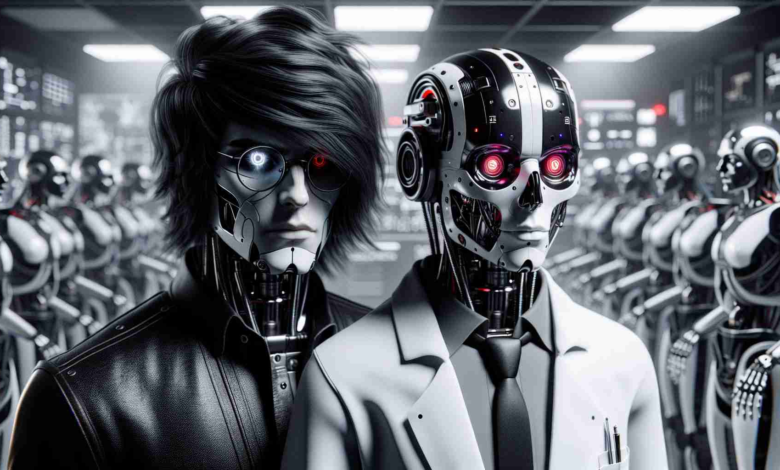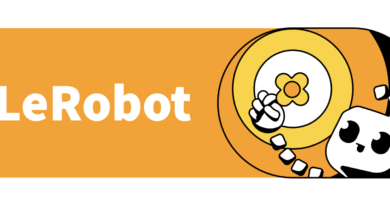Emo Pioneers Emotional Intelligence in Robotics

Summary: Emo, a robot developed by researchers at Columbia Engineering, marks a significant advancement in robotics by displaying the unique ability to mimic human facial expressions, which could have far-reaching implications for the integration of robots into social settings.
While the robotics industry has been fixused on creating machines with superior physical capabilities, a new leap in innovation has emerged. Columbia Engineering’s new robot, Emo, breaks through the mold by demonstrating an exceptional talent for emotional interaction. This robot stands apart for its focus on human facial expressions, unlike its counterparts that primarily showcase agility and strength.
Emo’s design incorporates facial features capable of conveying a wide range of emotions to facilitate deeper interactions with humans. Utilizing high-definition cameras for eyes and coupled with advanced algorithms, Emo can interpret and simulate human expressions in real time. The demonstration of this technology displayed the robot altering its facial expressions to parallel a human’s with haunting accuracy.
This breakthrough is not simply about technical showmanship but highlights an important stride in developing robots that could someday seamlessly act as companions or aides. The potential of such emotionally intelligent machines in sectors like healthcare, education, and customer service could redefine the human-machine relationship.
Still, the creation of robots like Emo comes with challenges, both technical, such as refining emotion recognition, and ethical, including privacy and employment concerns. Addressing these issues is paramount as we integrate these technologies into society. If guided responsibly, Emo and similar robots carry the promise to not just mimic human emotions but also genuinely respond to them, harmonizing the future of our interaction with machines.
For additional insights into ongoing innovations in robotics, consult resources provided by industry leaders such as the IEEE, RIA, and ISR. Note that perspectives on market growth and integration challenges are continually evolving with advances in research and technology.
Expansion of the Topic:
The introduction of Emo, a robot capable of mimicking human facial expressions, is a groundbreaking development by Columbia Engineering and a significant milestone within the robotics industry. The traditional focus has been on enhancing robots’ physical abilities, but the trend is shifting towards emotional intelligence, a domain crucial for the evolution of social robots.
The global robotics industry is multifaceted, encompassing sectors such as manufacturing, healthcare, automotive, and service industries. According to market forecast reports, the demand for advanced robotics is continuously on the rise, with a significant compound annual growth rate. This growth is spurred by the need for automation, precision, and efficiency across various sectors.
The integration of robots like Emo in healthcare may lead to improved patient care, as robots could provide company to the elderly or assist individuals with disabilities. In education, they could offer personalized support to students, adapting to their emotional and educational needs. The customer service industry is also set for a transformation with emotionally intelligent robots that can understand and respond to customer moods and preferences, delivering a new level of service experience.
It’s not all smooth sailing, however, as the advanced capabilities of robots like Emo also present numerous challenges. From a technical standpoint, continuous improvements are required in emotion recognition algorithms, ensuring that robots can understand a full spectrum of human emotional expressions. Furthermore, there is a need for extensive datasets which must be collected and processed responsibly to respect privacy.
Ethical concerns are also at the forefront of debates concerning robotics. This includes the impact on employment, as robots could potentially replace human jobs, and the treatment of robots, considering their growing emotional intelligence capabilities. The privacy of individuals interacting with robots is of equal concern, particularly regarding how personal data is used and protected.
Amid these considerations, the promise of Emo and similar robots lies not merely in their ability to replicate human expressions but in their potential to form meaningful aids in daily life, offering companionship and understanding. These robots could also serve as testbeds for research in human-robot interaction, cognitive psychology, and social neuroscience.
For deeper understanding and staying abreast of emerging trends and forecasts in robotics, potential sources include the following:
– IEEE (Institute of Electrical and Electronics Engineers): A non-profit professional association dedicated to advancing technology for humanity.
– RIA (Robotics Industries Association): A prominent organization that supports innovation and standardization in robotics.
– ISR (International Symposium on Robotics): A global conference that brings together researchers, engineers, and scientists in the robotics field.
By visiting their respective websites, one can find a wealth of information, including white papers, market analysis reports, and resources for both the academic and industrial robotics communities. These platforms provide a comprehensive view of where the industry stands today and its trajectory for the future.

Natalia Toczkowska is a notable figure in digital health technology, recognized for her contributions in advancing telemedicine and healthcare apps. Her work focuses on developing innovative solutions to improve patient care and accessibility through technology. Toczkowska’s research and development in creating user-friendly, secure digital platforms have been instrumental in enhancing the effectiveness of remote medical consultations and patient monitoring. Her dedication to integrating technology in healthcare has not only improved patient outcomes but also streamlined healthcare processes, making her a key influencer in the field of digital health innovation.



